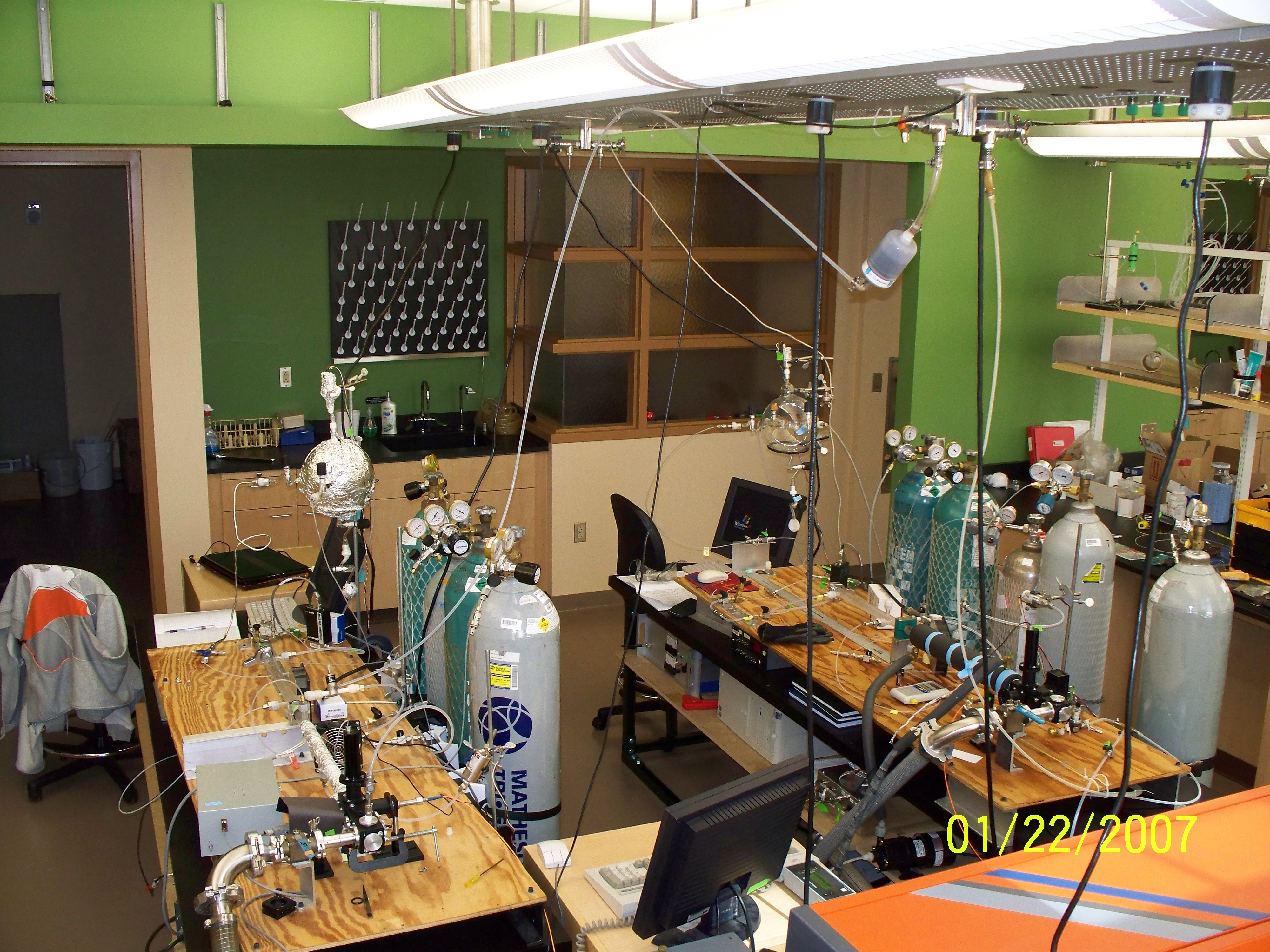Laboratory measurements of VOC oxidation
Because of their high reactivity, emissions of biogenic compounds can contribute significantly to the production of ozone and secondary organic aerosols in the atmosphere, the primary components of photochemical smog. We are using flow techniques coupled with laser-induced fluorescence and resonance fluorescence detection of radicals to examine some of the individual chemical reactions in the oxidationmechanisms. The goal of this work is to improve our understanding of the contribution of these natural emissions to air quality and climate change.
These studies focus on the chemistry of several biogenic VOCs such as isoprene, oxygenated compounds from natural sources such as 2-methyl-3-buten-2-ol, as well as similar compounds such as allyl alcohol in order to determine structure reactivity trends. We are also interested in examining the chemistry of oxygenated products of biogenic hydrocarbon oxidation such as methacrolein, methyl-vinyl ketone, hydroxyacetone and glycoaldehyde. We are also studying new oxidation pathways for these compounds that may enhance the cycling of radicals in the atmosphere.


